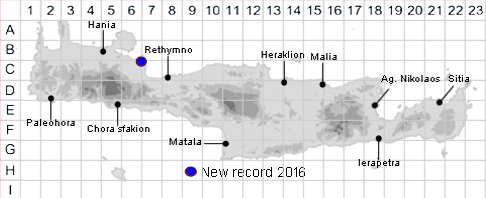
SPECIES DESCRIPTION
ARTEMISIA VULGARIS
Family:- COMPOSITAE/Sect. ARTEMISIA
Common Name:- None
Synonyms:- Absinthium vulgare, Artemisia vulgaris subsp. typica.
Meaning:- Artemisia (Gr) Dioscorides' name for Artemis (Diana), wife of Mausolus,
of Caria, Asia Minor.
Vulgaris (L) Vulgar, common.
General description:- Perennial, caespitose, aromatic herb without overwintering
rosettes.
Stem:-
1) (30-)60-120(-210) cm, sparsely pubescent, often glabrescent, usually red or
purplish.
Leaves:-
1) Pinnatifid, auriculate at the base, the segments sometimes deeply lobed,
reticulately-veined, usually glabrous above, densely whitish-tomentose beneath.
2) Lower, shortly petiolate, upper sessile.
Flowers:-
1) Capitula numerous, subsessile, erect or slightly recurved, crowded on the
branches of a large panicle.
2) Bracts, leaf-like, the upper small and simple.
3) Involucre 2·5-3 mm, campanulate or ovoid; bracts greyish-arachnoid-pubescent,
outer lanceolate, acute, margins broadly scarious, the inner longer, oblong,
obtuse.
4) Receptacle glabrous.
5) Corolla usually reddish-brown.
Key features:-
1) Panicle usually much-branched.
2) Involucre 2·5-3 mm.
3) Leaves with an obscure network of small veins.
Habitat:- Roadsides and ruderal habitat, 0-100 m.
Distribution:- Rather common in north mainland Greece, a widespread Euro-
Siberian species. Previously unrecorded on Crete.
.
Flowering time:- June-Sept.
Photos by:- Fotis Samaritakis
